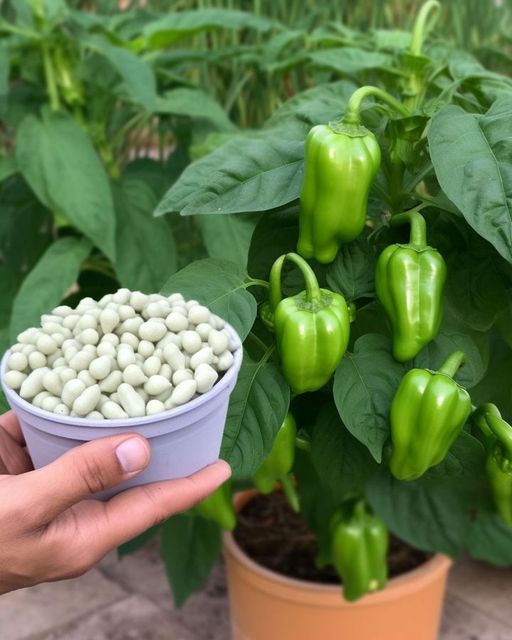Embarking on the journey of growing your own bell peppers is not only a delightful endeavor but also a gateway to savoring the freshest and most succulent peppers imaginable. These colorful, vitamin-rich vegetables are a staple in countless dishes, adding a burst of taste and nutrition to every bite. However, to truly unlock their full potential, it’s essential to master the art of cultivating bell peppers with expertise and care.
In this comprehensive article, we will unveil the best-kept secrets (including the use of aspirin tablets — keep reading for that) for growing bell peppers that will leave your taste buds tingling with delight. Whether you’re a seasoned green thumb looking to fine-tune your skills or a gardening enthusiast eager to begin this rewarding journey, join us as we delve into the secrets that will elevate your bell pepper cultivation to new heights of success and flavor. Prepare to transform your garden into a haven of luscious bell peppers that will impress even the most discerning of palates.
Advertisement
1. Select the Right Variety
Choosing the perfect bell pepper variety tailored to your specific climate and growing conditions is paramount. If you have a short growing season, opt for early-maturing varieties like ‘Early Red Bell’ or ‘Yolo Wonder.’ If you live in a region with high humidity or disease prevalence, consider disease-resistant varieties such as ‘Revolution’ or ‘Lipstick.’
2. Site Selection and Sunlight
Find a sunny spot in your garden with well-draining soil to create the ideal environment for bell pepper growth. A south-facing location is ideal, as it receives the most sunlight throughout the day. Ensure the area is sheltered from strong winds, which can damage the delicate bell pepper plants.
3. Soil Preparation
Prepare the soil properly to provide your bell pepper plants with the nutrients they need. Mix in plenty of organic matter like compost or well-rotted manure to improve soil fertility and structure. Conduct a soil test to determine its pH level and adjust it to the optimal range of 6.0 to 7.0 for bell peppers.
4. Adequate Watering
Consistent and appropriate watering is crucial to prevent water stress and ensure healthy fruit development. Aim to provide about 1 to 2 inches of water per week, adjusting based on weather conditions and plant size. Water deeply at the base of the plants early in the morning to minimize evaporation and fungal diseases.
5. Mulch Matters
Mulching is essential for retaining soil moisture and suppressing weeds around your bell pepper plants. Apply a 2 to 3-inch layer of organic mulch, such as straw, shredded leaves, or grass clippings. This not only conserves water but also regulates soil temperature, creating an optimal growing environment for your peppers.
6. Fertilize Wisely
Feeding your bell pepper plants with the right nutrients is vital for their growth and productivity. Use a balanced fertilizer with equal ratios of nitrogen (N), phosphorus (P), and potassium (K) or one formulated specifically for vegetables. Avoid excessive nitrogen, as it can lead to lush foliage but fewer fruits. Follow the recommended application rates on the fertilizer package.
7. Pruning for Productivity
Pruning your bell pepper plants can significantly enhance their productivity and health. Remove the first flowers that appear on young plants to encourage stronger root and stem growth. As the plants grow, pinch off the top few inches of the main stem to encourage bushier growth and more fruiting nodes.
8. Stake and Support
Bell pepper plants, especially when laden with fruits, can become top-heavy and prone to breaking. Stake or cage your plants to provide adequate support. Use soft ties to secure the branches gently and prevent damage to the stems. This also ensures that the fruits stay off the ground, reducing the risk of rot or pest damage.
9. Pest and Disease Management
Be vigilant against common pests like aphids, spider mites, and caterpillars that can harm your bell pepper plants. Consider introducing beneficial insects like ladybugs or lacewings to help control these pests naturally. Regularly inspect your plants for signs of diseases such as bacterial spot or powdery mildew, and promptly address any issues with appropriate treatments like copper-based fungicides or neem oil.
Continued on next page
